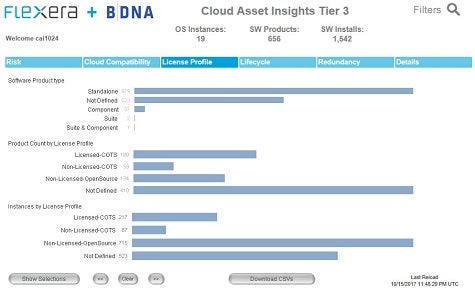IT organizations have had a vested interest in trying to rationalize the number of applications that need to be supported to reduce the licensing fees and minimize total cost of operations. That’s not always been an easy goal to achieve, however, because individual lines of business inside an organization are often overly attached to an […]
IT organizations have had a vested interest in trying to rationalize the number of applications that need to be supported to reduce the licensing fees and minimize total cost of operations. That’s not always been an easy goal to achieve, however, because individual lines of business inside an organization are often overly attached to an application even when there is another one being used by the application that provides the same functionality. But now that IT organizations are being tasked with lifting and shifting applications into the cloud, a unique opportunity to rationalize many applications is presenting itself.
To help IT organizations achieve that goal, Flexera has acquired BDNA, a provider of software asset management software that makes it simpler for IT organizations to identify applications that perform the same functions. Walker White, formerly president of BDNA and now vice president for data platform for Flexera, says the software asset management tools developed by BDNA will be used to inform the enterprise license management software that Flexera makes available to IT organizations. BDNA recently extended those asset management capabilities to include applications running on Amazon Web Services (AWS) via a service dubbed BDNA Cloud Asset Insights. White says that means IT organizations can now also more easily discover when application functions are being duplicated across multiple applications running on AWS.
“BDNA enables IT organizations to make a true apple-to-apple comparison between applications,” says White.
White notes that in a public cloud environment, an organization is charged for usage so every application that can be rationalized results in an immediate reduction in operational costs. In contrast, most of the applications deployed on premises were typically treated as capital costs that tend to not receive the same level of management focus on a quarterly basis. Now that many of those applications are being considered as candidates to be redeployed in the cloud, White says that event creates a unique moment where senior managers are focused on both the short-term costs associated with making that migration as well as the total cost of running those applications on an infrastructure-as-a-service (IaaS) environment. That provides IT leaders with an opportunity to question why many applications even need to exist at all when it can be conclusively shown they are only duplicating functionality that already exists.

There are many good reasons for lifting and shifting some applications into a public cloud. But at the same time, migrating applications into the public cloud is something of a fashion trend. Many business leaders are simply convinced the cloud is the right answer regardless of cost. IT leaders that are asked to assume the responsibility for managing those applications have at the very least a fiduciary responsibility to inquire why many of those applications need to exist at all. That may not always be the conversation a line of business executive wants to have. But it is one that the owners of the business are likely to applaud.
MV
Michael Vizard is a seasoned IT journalist, with nearly 30 years of experience writing and editing about enterprise IT issues. He is a contributor to publications including Programmableweb, IT Business Edge, CIOinsight and UBM Tech. He formerly was editorial director for Ziff-Davis Enterprise, where he launched the company’s custom content division, and has also served as editor in chief for CRN and InfoWorld. He also has held editorial positions at PC Week, Computerworld and Digital Review.









